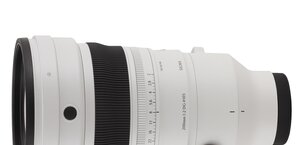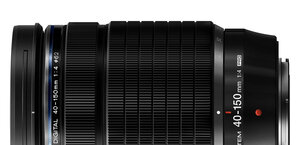Canon EF 200 mm f/2.0L IS USM
4. Image resolution
Let’s have a glance at a graph below to assess how the tested lens fares in the frame centre, on the edge of an APS-C sensor and full frame.
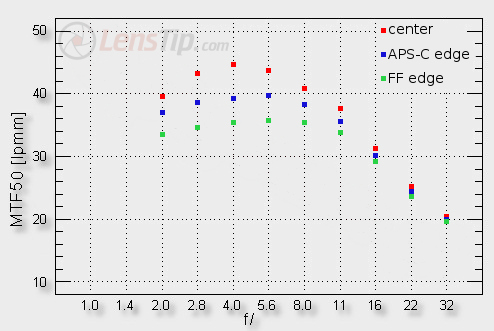
Please Support UsIf you enjoy our reviews and articles, and you want us to continue our work please, support our website by donating through PayPal. The funds are going to be used for paying our editorial team, renting servers, and equipping our testing studio; only that way we will be able to continue providing you interesting content for free. |
- - - - - - - - - - - - - - - - - - - - - - - - - - - - - - - - - - - - - - - - - - - - - - - -
The performance in the frame centre is really beyond reproach. Already at the maximum relative aperture the lens gets to a very high level of almost 40 lpmm and on stopping down it can even reach 44 lpmm.
The performance on the edge of the frame can be described in similar terms. The image is of a very high quality, both for the APS-C and full frame, and right from the maximum relative aperture.
Are we dealing with a perfect instrument? The situation is not so rosy. Let’s compare the tested lens to the older Canon EF 200 mm f/2.8L USM II. Of course we get 1 EV of light more so the 2/200 model by f/2.8 fares a lot better than the slower 2.8/200 one – f/2.8 is its maximum aperture after all. However, after further stopping down both lenses start to perform similarly within the margin of error. If you look at the maximum achievements in the frame centre you can say that the newer and faster Canon 2/200 is not better than the older and slower model. Should it be better, though? It seems so. The Canon EF 300 mm f/2.8L IS USM II fared a bit better and the Nikkor AF-S 200 mm f/2G ED VRII could even get to a level above 46 lpmm.
The frame edge performance is where the new lens outperforms the older 2.8/200 model. The slower Canon at the maximum relative aperture fared much worse, never exceeding the 30 lpmm level. Here the advantage of the new lens is clearly visible and truly significant.
Let’s check how the tested lens cooperates with the newest brand name converter, the Canon Extender EF 1.4x III. The appropriate graph is presented below.
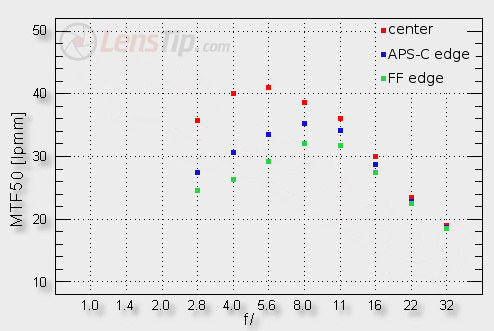
The performance in the frame centre is really very good. Even at the maximum relative aperture, which in this case is already f/2.8, you reach a high level of almost 36 lpmm and on slight stopping down the lens can exceed 40 lpmm. Here you really can’t have even the slightest reservations.
The edge of the frame is another matter – it suffers the most after attaching the converter and the tested Canon EF 2/200 is hardly an exception to that rule. At the maximum relative aperture the image isn’t fully useful either on the edge of the APS-C sensor or full frame. In the case of the smaller detector the usefulness is reached only after stopping down by 1 EV and in the case of the bigger one – after stopping down by as much as 2 EV.
At the end of this chapter we present some crops of our resolution testing chart photos, saved as JPEG files along with RAW files, used for the analysis above.
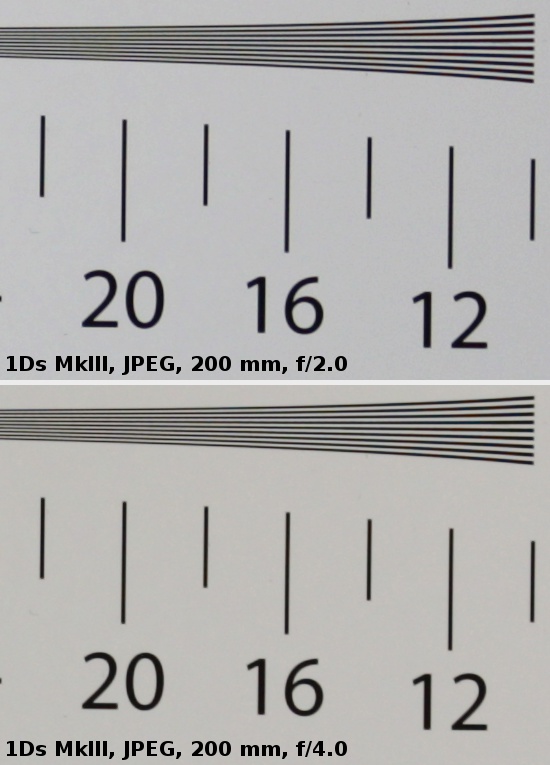 |




